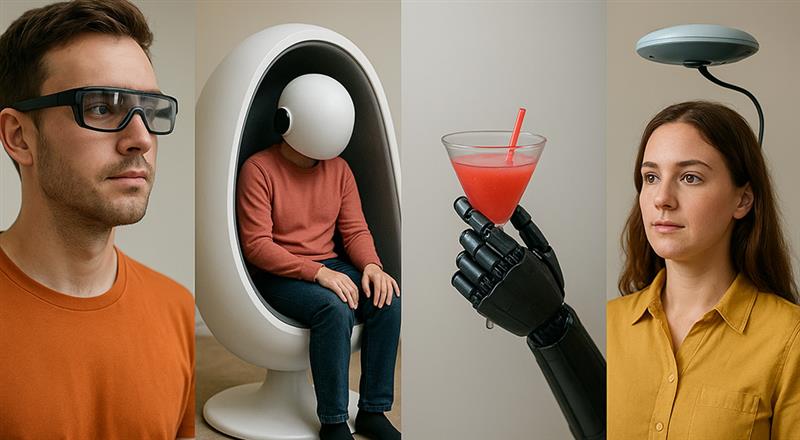The entertainment business has entered an interesting battle. On one side is the traditional cinema with all the screens, sound, nostalgia, and of course, the smell of popcorn. On the other side are OTT (Over the Top) services like Netflix, Amazon Prime Video, Disney+ Hotstar, and JioCinema — the convenience of entertainment to your screen with the touch of a finger.
As we enter 2025, the OTT versus cinema debate has progressed past a convenience versus experience debate. It is now about control, culture, and how audiences are deciding to consume stories. So who is actually winning the battle? Let’s find out.
The OTT Revolution: Empowering the Viewers
OTT platforms, over the past couple of years, have transformed the way we consume content. In terms of market valuation, the OTT market in India is expected to exceed ₹250 billion (US$3 billion) by 2025, fueled by over 700 million internet users.
The biggest advantage of OTT is simply choice.
Choice regarding what to watch, when to watch, and where to watch it. No more waiting for shows to start and no more overpaying for snacks. Simply put, OTT is more personalized for tech savvy young Indians — entertainment on your terms and when you want it.
The OTT space continues to expand for some key reasons:
- Value: A monthly cost of an OTT subscription is usually less than the cost of a single ticket for a movie in a metropolitan area.
- Accessibility: From mobile phones to smart TVs, OTT platforms/platform is literally one click away.
- Eclectic Diversity of Content: Regional stories, documentaries, international series, independent films. OTT provides content that speaks to our mood and in our language.
- Lack of Censorship: The only stall in the creative process has now gone away. A platform’s subject matter is often only limited by the creator’s imagination.
By 2025 Indian OTT viewers were consuming content in more than 15 different languages and regional platforms of Aha, Hoichoi, and Chaupal were thriving.
Cinema’s Return: Experience Still Matters
Despite all of that, cinema is not dead; in fact, it is far from it. After the COVID downturn theaters seem to be bustling again. Theatres are focusing on premium experiences — IMAX, recliner seating, fancy snacks, and immersive sound systems such as Dolby Atmos is where big theatre chains are currently driving revenue.
Examples like Jawan, Leo, Animal, and Kalki 2898 AD show us that when it comes to big releases, the theatrical experience still captures mass excitement. The excitement of a filled crowd, gasps, and laughter are all elements that OTT simply cannot duplicate.
Reasons why cinema still commands audiences:
- Event Cinema – Marketing for movies nowadays is similar to high profile festival events, with marquee stars, music launches, and fan celebrations.
- Community Experience – Watching a blockbuster film with hundreds of people enhances excitement and emotion and again cannot be replicated from the couch while watching on your TV.
- Spectacle Factor – Watching movies on the big screen, especially ones like 3d or IMAX, provides a cinematic scale that cannot be visualized the same way when watching on a screen at home.
- Social Experience – Going to the movies is a social ritual, comprised of everything from dates, to family outings, or celebrating birthdays with friends.
Interestingly, 2024 and 2025 have heralded a revival of hybrid releases — a film having a short time in theatres before moving, usually within weeks, to streaming. This is a win win win for both industries, creates options, and keeps them from cannibalizing each other.
Audience Behavior Disruption in 2025
In 2025 audiences are more segmented than ever before. The same individual who watches Mirzapur on a weekday, might see the same content at the theatre on the weekend to see Pushpa 2.
Trends that are influencing viewership:
- Short Attention Spans: OTT is thriving on bingeable short form content people love to watch short form entertainment on the go.
- Quality Over Quantity: Viewers prefer fewer shows with better content leading to more curated content.
- Global Exposure: Not only are audiences watching Korean thrillers, but also Spanish dramas and Indian regional hits with equal enthusiasm.
- Smart Bundling: Telco’s including Jio and Airtel are embedding OTT subscriptions into mobile data plans to make access seamless.
This change indicates that consumers are not loyal to the platform they are loyal to the stories. If a movie or show has a compelling story people will find a way to watch it no matter the medium.
The Economics: Who is Winning the Money Game?
Financially, OTT and cinema are learning to coexist instead of competing.
- OTT Revenue Growth: The subscriptions and advertising models yielding substantial profits are exploding, driven in India currently by ad supported streaming that is expected to grow 20% a year.
- Box Office Recovery: The Indian box office is expected to recover to ₹16,000 crore by 2025, with regional films accounting for nearly 40% of its revenue.
- Hybrid Triumphs: Movies such as Drishyam 2 and Vikram have demonstrated that an exclusive theatrical run followed by an OTT release can achieve the highest tea, and that is especially true for regional films.
In short, the entertainment economy is becoming a shared ecosystem; an OTT platform gains long term sustainable viewers, and cinema produces immediate mass returns.
The Future: A Collaboration, Not a Competition
If 2020 was the year that OTT surged and 2022–2023 was cinema’s renaissance, then 2025 will be known for studio and streaming collaboration. Studios and streaming platforms are working collaboratively.
- Many filmmakers are employing crowdfunding dual release modalities that allow flexibility for their audience.
- Crossover content— like web series spin offs from films that dominated expectations is training audiences to recognize that border between film and streaming, no longer concerned with screens being small or large.
- Filmmakers are using OTT to experiment with the potential for success and not even commit to a theatrical release.
Even movie stars are accommodating interchangeably. Actors like Shah Rukh Khan, Pankaj Tripathi and Samantha Ruth Prabhu are everything movie stars should be and can easily balance working in own or original stories.













